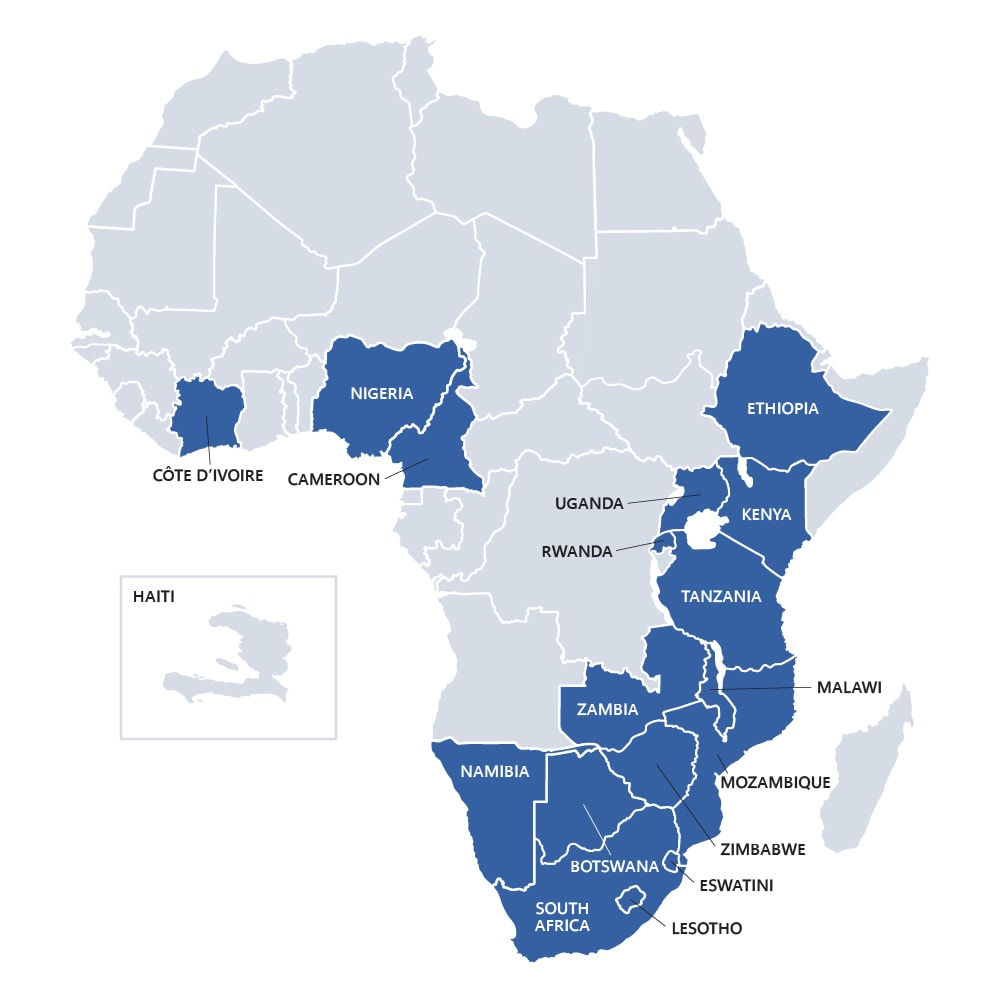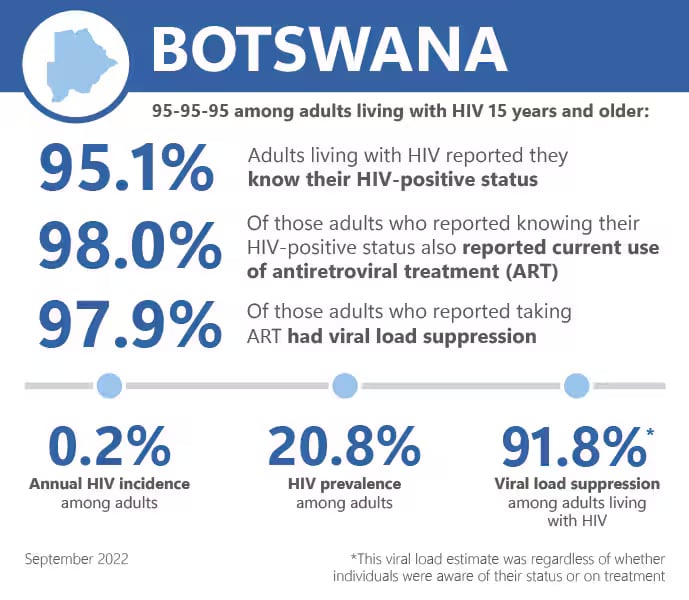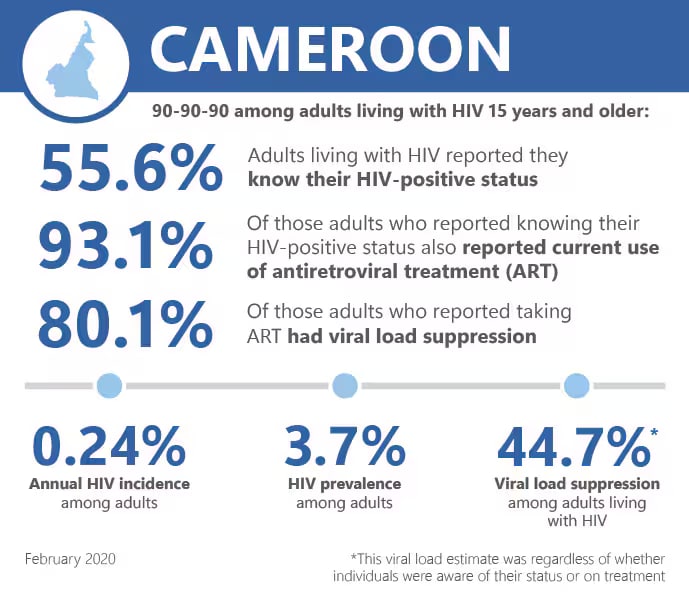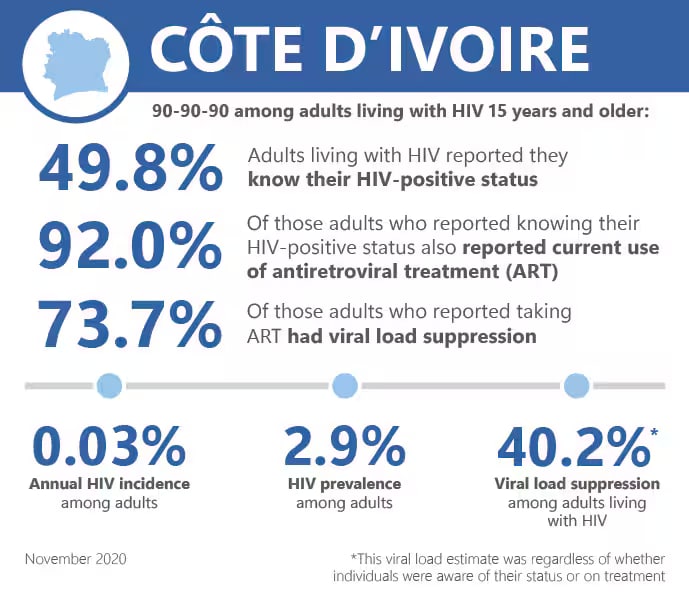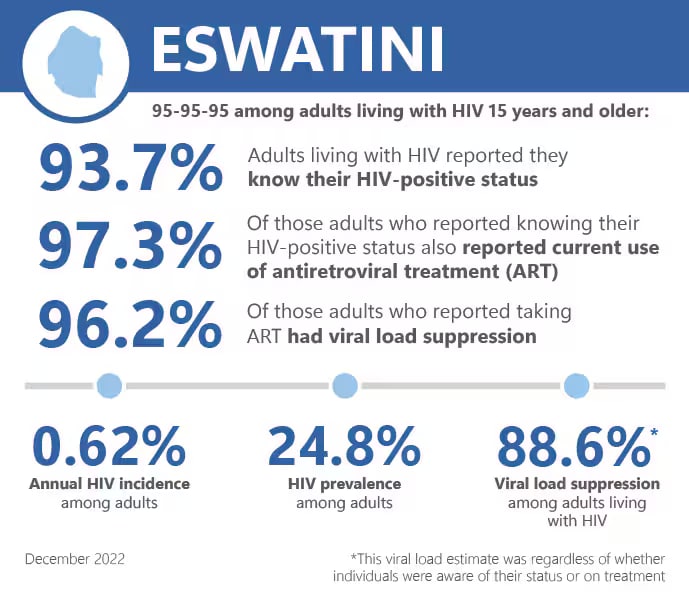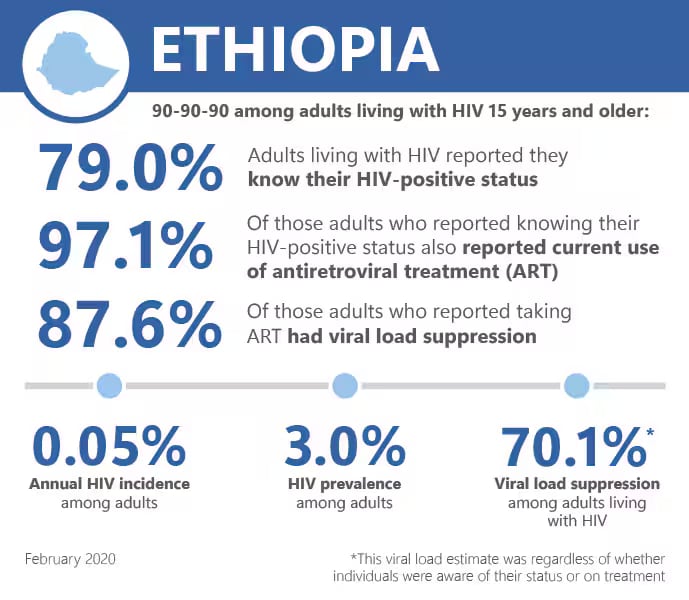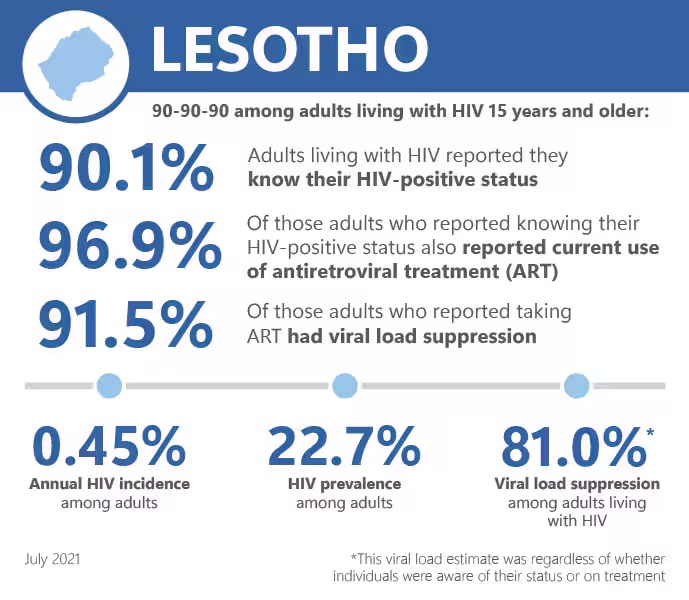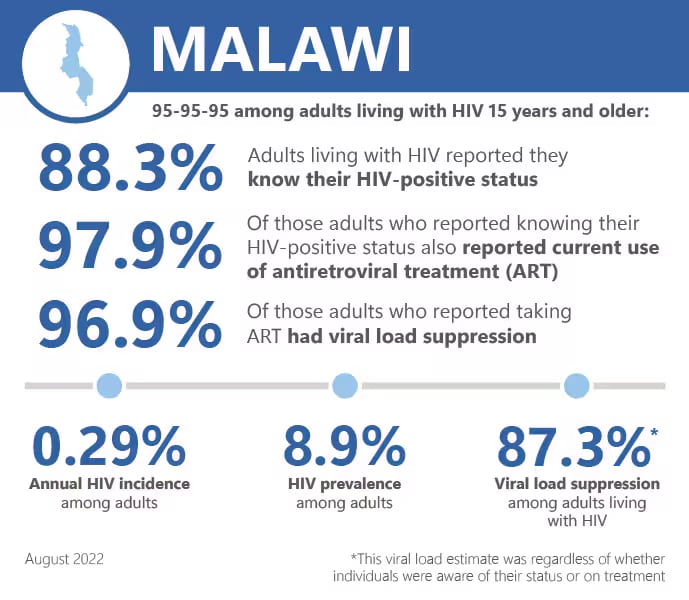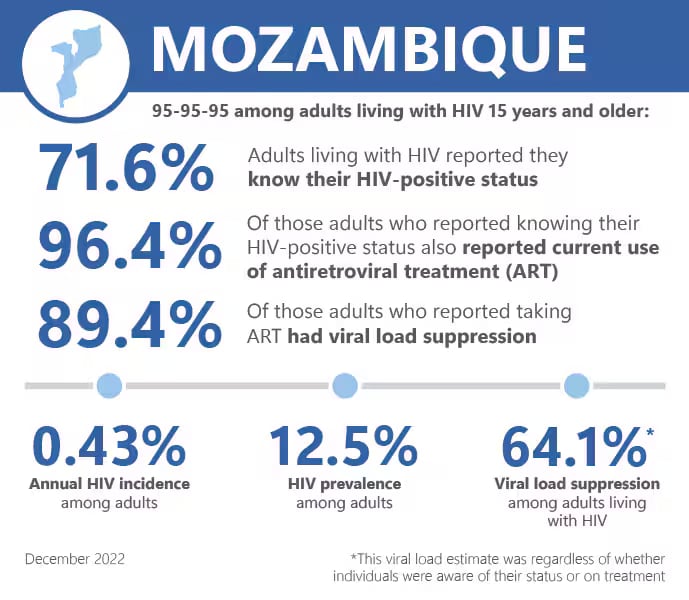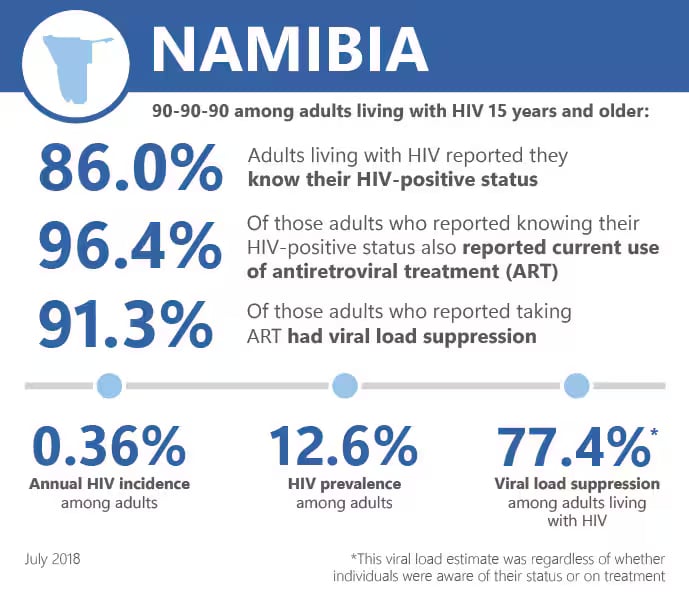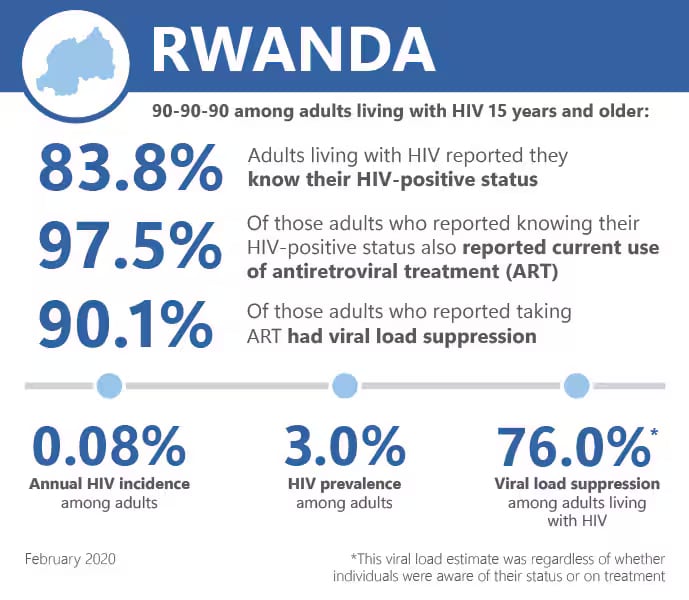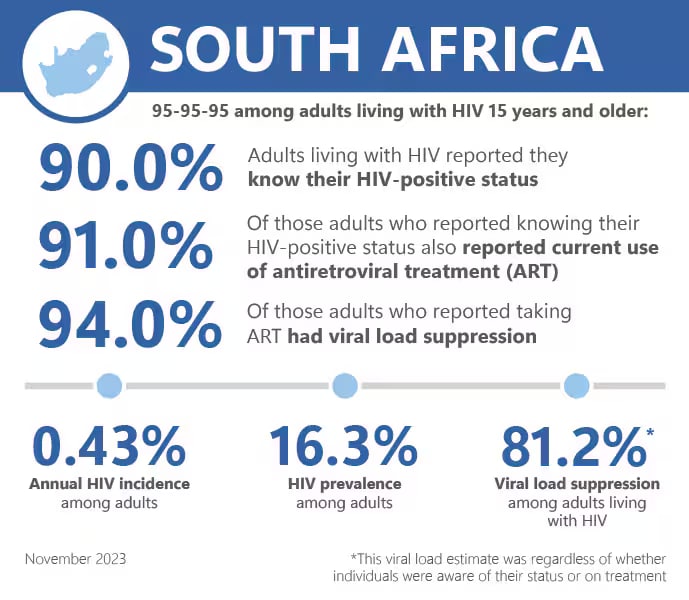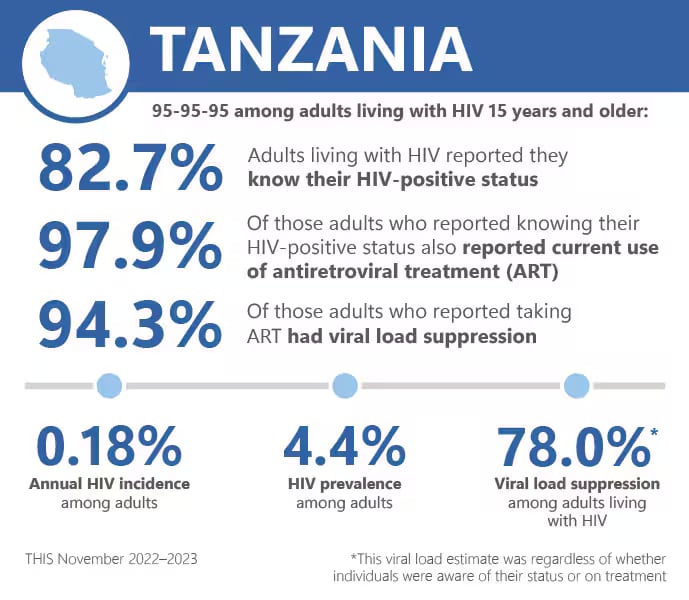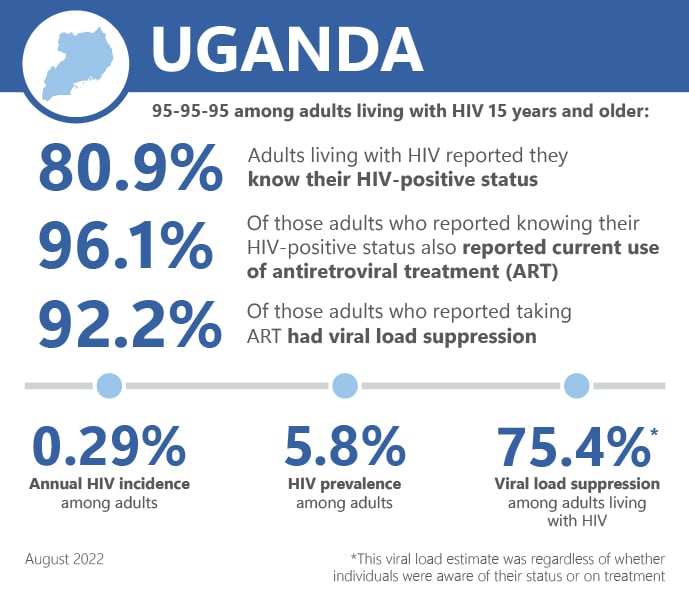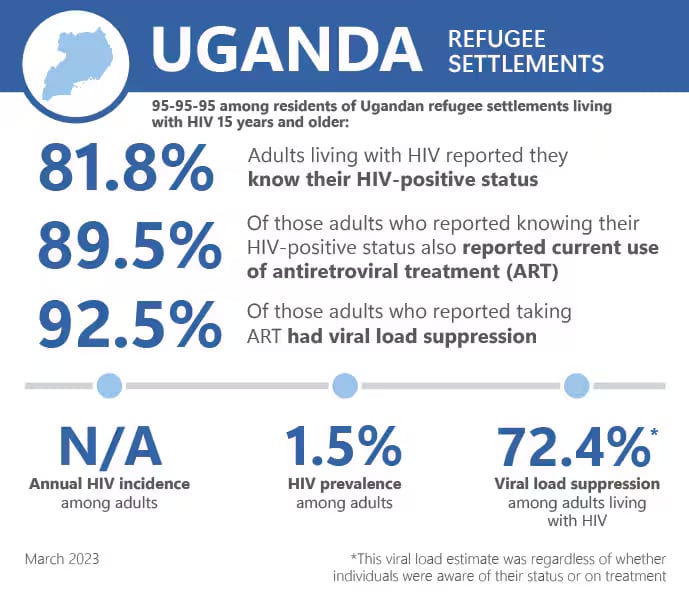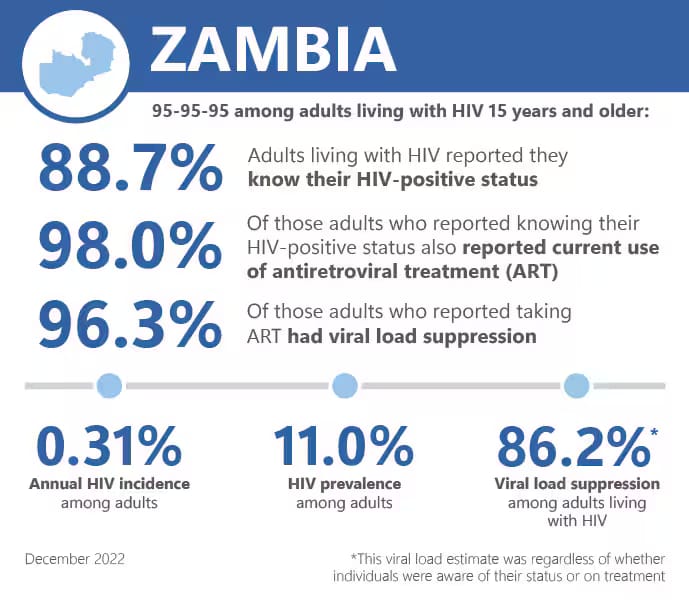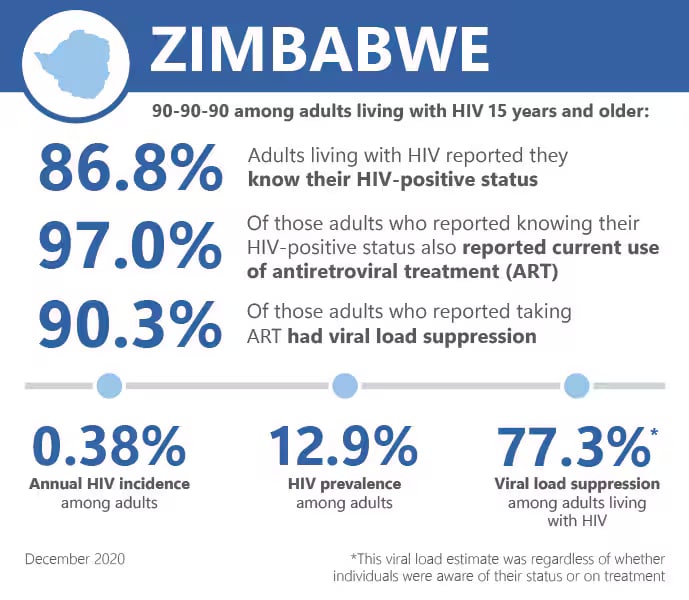At a glance
- Population-Based HIV Impact Assessments (PHIAs) are an important tool for measuring the impact of HIV treatment and prevention programs in PEPFAR-supported countries.
- CDC's technical and scientific expertise and partnerships contribute to the successful collection and analysis of survey data toward continuous program improvement.
Using data for program improvement
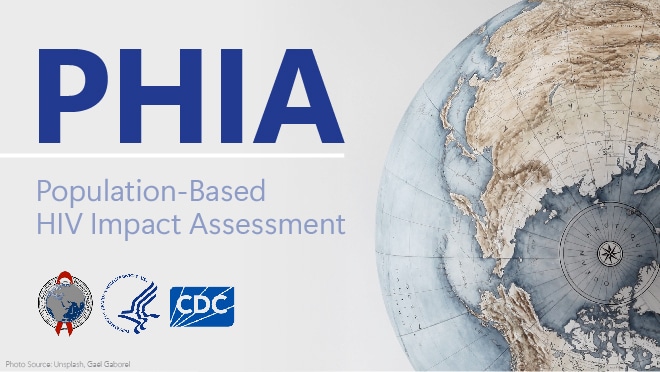
CDC works with partners to measure progress towards HIV epidemic control in countries supported by PEPFAR. These partners include host countries, local implementing partners, faith-based and community-based organizations.
The Population-Based HIV Impact Assessments (PHIAs) surveys are household surveys that measure progress in the global HIV and TB response. PHIAs are an important tool for measuring the impact of HIV treatment and prevention programs in PEPFAR-supported countries. CDC and partners apply analytical insights from PHIAs to make timely adjustments to programs. These adjustments lead to increased efficiencies and positive outcomes for community members, including people living with HIV.
CDC's technical expertise and scientific leadership contribute to the success of the collection and analysis of data. CDC's longstanding relationships with national and regional governments, implementing partners and host communities are also vital to the success of PHIAs. These factors are vital for the collection and analysis of survey data and rapidly implementing insights toward continuous program improvement.
What is a population-based HIV impact assessment (PHIA)?
The PHIAs are household surveys conducted globally to directly measure progress towards HIV epidemic control. PHIAs provide a better understanding of HIV trends at the national and regional level, as well as population-wide program achievements. PHIAs collect data on uptake of treatment for HIV and other infectious diseases and provide real-time home-based HIV counseling and testing. They also estimate HIV incidence (estimated number of HIV infections annually) and viral load (amount of virus detected in the body). The surveys usually occur on a three-to-five-year cycle.
UNAIDS is leading the charge against HIV/AIDS with the goal of eliminating HIV as a public health threat by 2030. This initiative is aligned with the United Nations Sustainable Development Goals. To attain this goal, UNAIDS set the ambitious but achievable 95-95-95 targets:
- 95-percent of all people living with HIV will know their HIV status
- 95-percent of all people with diagnosed HIV infection will receive sustained antiretroviral treatment (ART)
- 95-percent of all people receiving ART will achieve viral suppression
PHIA survey data highlights
Data highlights from participating countries’ surveys showing progress toward UNAIDS targets and HIV incidence, prevalence, and viral load suppression. Prior to 2020, PHIAs tracked progress toward 90-90-90 targets. These targets reflect a snapshot of progress at the time of the survey. Subsequent surveys track progress toward more ambitious 95-95-95 targets.
Frequently asked questions
UNAIDS global targets for HIV epidemic control call for finding and diagnosing people living with HIV. The targets also call for ensuring that all people diagnosed with HIV receive sustained antiretroviral treatment (ART). Research shows that sustained use of ART reduces the amount of HIV in a person’s body to an undetectable level. An undetectable viral load virtually eliminates transmission of the virus to sexual partners.
PHIAs are led by the Ministry of Health in participating countries, in partnership with the CDC and with support from PEPFAR. Technical and implementation support is provided by partners, including ICAP at Columbia University and the University of Maryland School of Medicine.
Working with other U.S. government agencies and technical partners, CDC lends expertise in epidemiology, laboratory science, and data analysis. CDC helps partners to design and implement PHIAs and rapidly harness the results for program improvement in PEPFAR-supported countries.
For each household, basic information is gathered from both the head of the household and each individual. Individual participants are asked about self-reported HIV status, exposure to HIV care and prevention services including voluntary medical male circumcision and HIV testing and counseling, and behavioral risk factors. A core group of questions are used across all country surveys to obtain data on key indicators.
The survey offers home-based HIV testing and counseling to measure HIV prevalence. Blood is collected and tested in a private location in or around the home using the standard rapid HIV test protocol that has been established by each country. All HIV-positive samples are retested with a confirmatory test in the laboratory. All participants are given their results immediately. Persons who test HIV-positive are offered a referral for HIV care and treatment. In most countries, those testing HIV-positive can choose to receive additional services which help link them to care and treatment. CD4 and viral load testing is conducted in a laboratory, and these results are sent to the clinic specified by the participant.
All participants who test positive for HIV are provided a referral form for use in seeking treatment at a health facility of their choice. Viral load and CD4 test results are returned to their chosen health facility within approximately 6 to 8 weeks. When results are available to be sent to clinics, the participants receive a reminder text message or phone call. Newly diagnosed participants may receive an enhanced or active referral. In some PHIAs, participants are contacted by a PHIA team member who helps them enroll in care at their chosen health facility, unless they prefer not to be contacted.
While the PHIA results demonstrate tremendous progress against the HIV epidemic by achieving high coverage particularly among women and older people, we can only truly control this epidemic by achieving higher results among underserved men and youth. In a majority of surveys, men who are HIV-positive and under age 35 and younger women were less likely to know their status, be on HIV treatment, or be virally suppressed than older adults. PHIA results help inform future programs to confront the global HIV epidemic helping to focus country efforts and resources for maximal impact and efficiency. The methods developed for the PHIAs can be a model for other countries that are conducting their own HIV-focused household surveys.
PHIA data are used to measure access to HIV prevention and treatment services and their impact, as well as provide data for global health and development indicators. Because the PHIAs include HIV data disaggregated by age, sex, and location, program planners and partners are able to maximize impact by making smarter investments to reach the right people in the right places. Additional laboratory testing will help assess transmitted and acquired drug resistance. This information is very important as we further expand treatment for HIV-positive persons.
Summary sheets from PHIAs are made public as surveys and analyses are completed. Detailed final reports become available approximately one year after the preliminary report is released. Datasets for use by public health professionals are released along with the final PHIA report, and will be available in multiple statistical formats, including SAS and Stata.
Resources
PHIA journal supplement
PHIA journal supplement as part of the August 2021 edition of the Journal of Acquired Immune Deficiency Syndromes (JAIDS).
ICAP resources
PHIA project data to guide the global response to the HIV epidemic.

